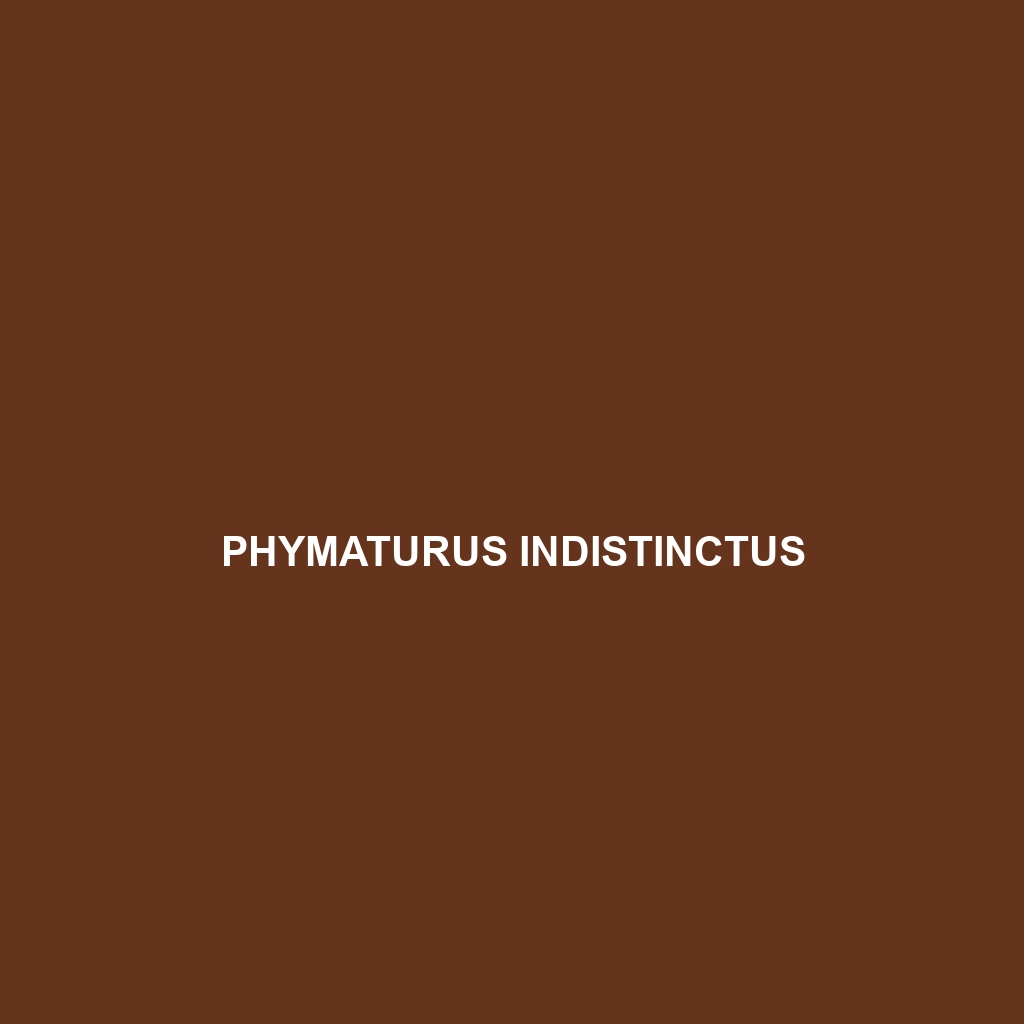Common Name
Phymaturus indistinctus
Scientific Name
Phymaturus indistinctus
Habitat
The Phymaturus indistinctus, commonly referred to as a specific species of lizard, primarily inhabits the arid environments of southern South America, particularly in regions of Argentina and Chile. It thrives in rocky outcrops and shrubland areas, where it finds ample cover and suitable conditions for thermoregulation. The climate in these habitats can vary, but they generally experience dry conditions with significant temperature fluctuations between day and night. Important ecological features of this habitat include sparse vegetation, granitic or volcanic soils, and a range of available microclimates, which are critical for the survival and thermal regulation of this species.
Physical Characteristics
Phymaturus indistinctus is a moderately sized lizard, with a typical length ranging from 15 to 25 centimeters. Its body is robust and flattened, which aids in maneuvering through rocky terrains. The coloration of this species can vary significantly and includes a mix of browns, grays, and subtle greenish hues, providing excellent camouflage against its natural surroundings. Notable features include elongated limbs adapted for climbing and a distinct pattern of scales that helps in moisture retention. Its head is slightly triangular and equipped with sharp, capable jaws for its diet.
Behavior
Behaviorally, Phymaturus indistinctus exhibits diurnal tendencies, being most active during the daytime. These lizards are known for their territorial nature, showing distinct social hierarchies that can influence mating success and feeding territories. During mating seasons, males engage in elaborate courtship displays that can include head bobbing and body posturing to assert dominance and attract females. Furthermore, these lizards often retreat to their rock shelters during the hottest parts of the day to avoid overheating, showcasing their intricate understanding of their habitat’s microclimates.
Diet
As an omnivore, Phymaturus indistinctus primarily feeds on a varied diet that includes insects, small invertebrates, and some plant material. This diverse eating habit enables the species to adapt to changing food availability throughout the seasons. The lizard is known to forage actively during the day, using its keen eyesight to hunt for prey and graze on small leaves and flowers available in its habitat. Its role as both predator and herbivore contributes to the dynamic balance within its ecological niche.
Reproduction
The reproductive cycle of Phymaturus indistinctus commences with the onset of the spring season, when temperatures rise, prompting mating behaviors. Mating rituals are marked by male displays and sometimes aggressive interactions. After a gestation period of approximately three to four months, females give birth to live young, with litter sizes ranging from 2 to 6 offspring. These hatchlings are often independent and capable of foraging shortly after birth, which reduces parental investment but allows for increased survival of the species in competitive environments.
Conservation Status
Currently, the conservation status of Phymaturus indistinctus is classified as vulnerable due to habitat destruction and fragmentation caused by agricultural expansion and urban development. Conservation efforts are underway to assess population dynamics and implement habitat protection strategies. However, ongoing monitoring is crucial as climate change poses additional threats to their natural habitats, further endangering this species and its long-term sustainability.
Interesting Facts
One fascinating aspect of the Phymaturus indistinctus is its unique ability to change its coloration slightly based on environmental conditions. This adaptive response not only aids in camouflage but may also play a role in thermoregulation. Furthermore, these lizards have become a subject of interest for researchers exploring the effects of habitat preservation on local biodiversity. Their ability to thrive in specific ecological niches makes them a valuable species for studying adaptations in extreme habitats.
Role in Ecosystem
Phymaturus indistinctus plays a significant role in its ecosystem as both a predator and prey species. By controlling populations of insects and other small invertebrates, they help maintain ecological balance. Additionally, they serve as a food source for various larger predators, including birds of prey. This keystone species contributes to the overall health of their habitat by promoting biodiversity and aiding in the nutrient cycling that supports plant life in arid environments.
